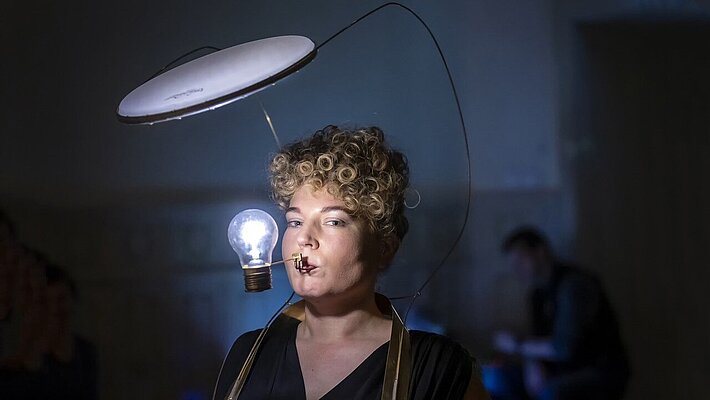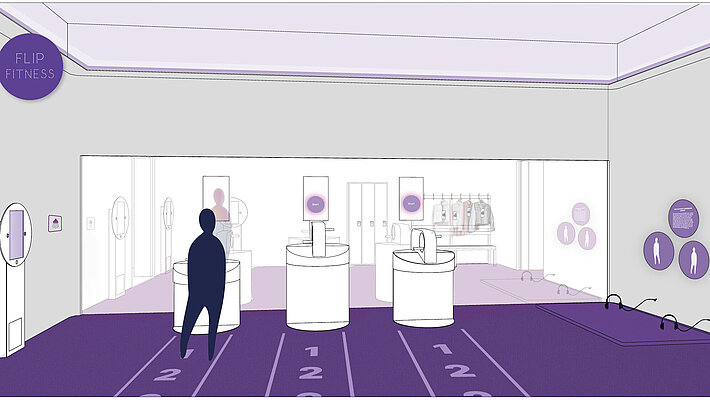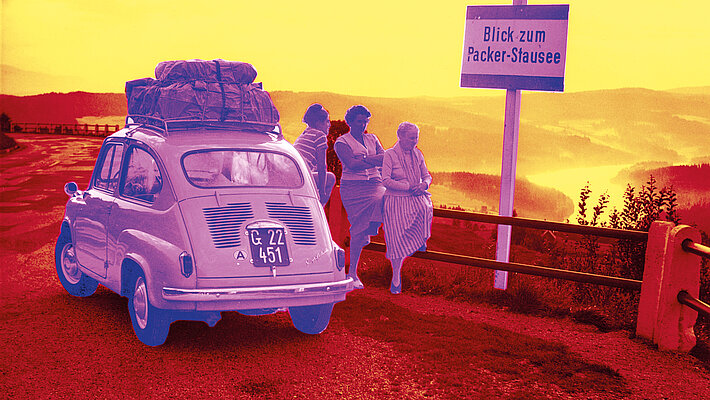|
|
|
|
|
|
Graz, January 16th 2025
In 2025, the Universal Joanneum will be presenting a highly varied programme with some 20 exhibitions and projects that examine art, culture, history, nature and science in a fascinating way.
The focal points are on financial education and democratic values, as well as how we live together as a society. Alongside SHOWING STYRIA 2025, which will take place in Schloss Eggenberg to mark the 400-year anniversary of the UNESCO World Heritage Site, the 2025 EXPO in Osaka, where Schloss Eggenberg will also play a role, also represents a special highlight.
|
|
|
|
|
|
|
|
|
|
|
|
With more than one million visitors, Austria’s oldest and second largest museum in terms of visitor numbers has been operating on a high level for some years now. Absolute records were set this year by the History Museum with around 25,000 visits, the CoSA – Center of Science Activities with approx. 30,000, and the Coin Cabinet in Schloss Eggenberg with some 22,000 visits.
|
|

The BRUSEUM deals with democratic values in the exhibitions “Freedom was an Episode (tbc)” and “Your Silence Will Not Protect You”: Mundstücke v3, live version as part of WIEN MODERN / sirene Operntheater: Makrokosmos Performer: Laura Steinl, Photo: Armin Bardel
|
|
|
|
|
|
|
|
|
|
|
|
Freedom and Democracy in the BRUSEUM and the Neue Galerie Graz
The BRUSEUM and the Neue Galerie Graz are turning the spotlight on our democratic values and on social change. The first exhibition in the BRUSEUM in the year to come examines how freedom in western societies is becoming eroded by neo-liberalism, digital psycho-politics and surveillance. Freedom was an Episode (tbc) shows new works by Austrian artists, including Günter Brus, Maria Legat and studio ASYNCHROME, who offer a snapshot of the current socio-political situation and envisage possible future scenarios. From October 2025, the exhibition Your Silence Will Not Protect You is on show in the BRUSEUM, an exploration of political and social apathy in Western societies in the face of global crises – inspired by Audre Lorde’s essay The Transformation of Silence Into Language and Action.
The term Camouflage is an expression of the relationships between living creatures and their surroundings – and also the title of one of the main exhibitions at the Neue Galerie Graz in the year to come. The exhibition shows the collaborative works between the artist Johannes Zechner and the writer Pedro Serrano, who investigates living spaces that are misused as the locations of war. The artist works poems and prose passages by the writer into the works made of camouflage material. It is clear to both that neither painting nor poetry will ever be used by the world; their art demands an attitude from the public, however.
In addition, the Neue Galerie Graz presents two important solo shows: an exhibition of works by Gerhard Rühm, one of the last living legends of the Austrian avant-garde, as well as a retrospective of the internationally renowned artist Wolfgang Hollegha, who died in 2023. Young artists will also be showing their outstanding works in the Neue Galerie Graz in 2025 as part of the Promotion Prize of the Province of Styria for Contemporary Visual Art. Parallel to this, Art Space Styria will be presented, in which participants in studio programmes and Cultural Section foreign scholarships present their works.
|
|

Let's talk about money: The FLiP at CoSA makes financial education accessible and understandable for everyone. Copyright: Guggenberger, Kronberger
|
|
|
|
|
|
|
|
|
|
|
|
Natural and Financial Resources
Alongside the Neue Galerie and the BRUSEUM, the Joanneumviertel in Graz houses the Natural History Museum and the CoSA – Center of Science Activities. Both museums engage with issues that currently impact society.
The FLiP in the CoSA offers youngsters from the age of 12 interactive access to financial education, teaching them important knowledge on the responsible handling of money, and on economic connections, too – in cooperation with the Steiermärkische Sparkasse.
The Natural History Museum is devoted to Climate Change in Styria in 2025. The exhibition will depict developments with regard to temperature, precipitation and frequency of storms, as well as the effects on forest cover and the spread of invasive species. Recommendations for action will be covered.
Ageing and Living is a main theme in the Folk Life Museum.
The Folk Life Museum at Paulustor examines how living – and in particular living in old age – is changing. As part of a year-round participatory project, people, institutions and cooperation partners are invited to research these topics together with a team from the Folk Life Museum, and then to devise an exhibition based on these findings.
The Folk Life Museum has collected, preserved and interpreted evidence of social life and human fates for more than 100 years. The exhibition They Want to Take Our Lives remembers those victims who lost their lives during the letter- and pipe-bomb attacks of the mid-1990s. The exhibition project titled ‘The Power of (Un-)Certainty’ engages with uncertainties, and security concepts resulting from them, placed in different historical and modern-day contexts.
Exhibitions in the regional locations of the Universalmuseum Joanneum
The special exhibition Changing Childhood. From the Straw Doll to the Smartphone in the Rosegger Museum in Krieglach sheds light on the many facets of childhood, from upbringing, education and play to work, nutrition and medical care, showing how childhood has changed over generations.
Schloss Trautenfels extends the special exhibition People, Worlds and Objects, as well as Signal from the Dachstein. In March the three museums at Schloss Stainz will open the permanent exhibitions of the Archduke Johann Museum, the Agricultural Museum and the Hunting Museum respectively, while in Flavia Solva a new window on Roman times will be opened at the end of June. The latter will focus on the long journey of terra sigillata – high-quality ceramics from the Roman Empire – and its distribution, reaching the upper classes of Flavia Solva, too.
|
|

One of the main exhibitions at the Museum of History will connect Carinthia and Styria at the end of 2025 - similar to the Koralm Railway: It deals with the question of why people from Carinthia and Styria have set off on the journey over the last 1,000 years. “With a Steyr-Fiat 600 over the “Pack”, around 1960, photographer unknown, UMJ/Multimedia Collections”
|
|
|
|
|
|
|
|
|
|
|
|
|
History in Motion
The museum year 2025 will begin at the History Museum with a major exhibition concerned with social change in the 19th century. It examines how places such as museums, department stores and spas turned into social stages for the middle class, influencing cityscape and social practices. Everyday working life, leisure behaviour and gender relations will likewise be addressed.
To mark the launch of the Koralm Railway on December 14th, 2025, the History Museum in Graz and the kärnten.museum Klagenfurt are presenting a cultural-historical exhibition that poses the question of why people from Carinthia and Styria have embarked on their journey over the last 1,000 years. Their central motives – from survival, control and administration, trading and working, research and learning to the search for recreation – form the various chapters of the 800 square-metre exhibition in Graz and Klagenfurt.
The History Museum is showing two photo exhibitions alongside the main exhibitions: the show titled Time Travel presents historical photographs from the Salzkammergut from January onwards. And starting in June, works by the photographer Franz Göttfried are on display, as well as Simon Baptist’s engagement – both artistic and scientific – with Göttfried’s photographic estate.
______________________
The press release with further information on the 2025 Annual Programme, as well as picture material for the individual exhibitions can be found at:
2025 ANNUAL PROGRAMME
______________________
We look forward to your reports and are happy to answer any inquiries you may have.
With kind regards
Daniela Teuschler
+43/664/8017 9214, daniela.teuschler@museum-joanneum.at
Stephanie Liebmann
+43/664/8017-9213, stephanie.liebmann@museum-joanneum.at
Eva Sappl
+43/699/1780-9002, eva.sappl@museum-joanneum.at
|
|
|
|
|
|
|
|